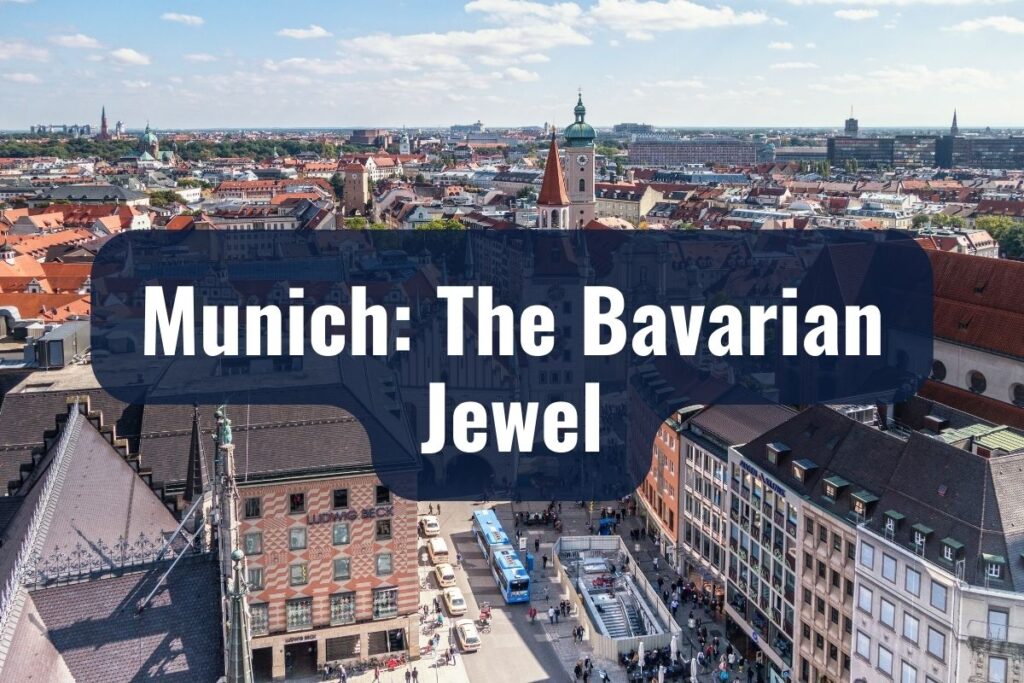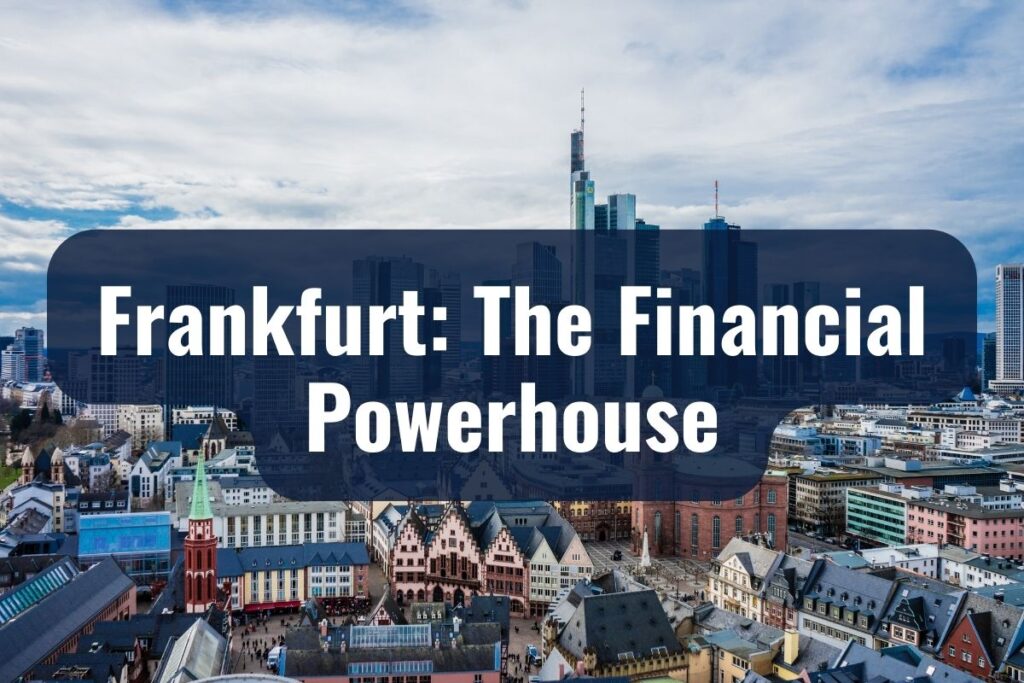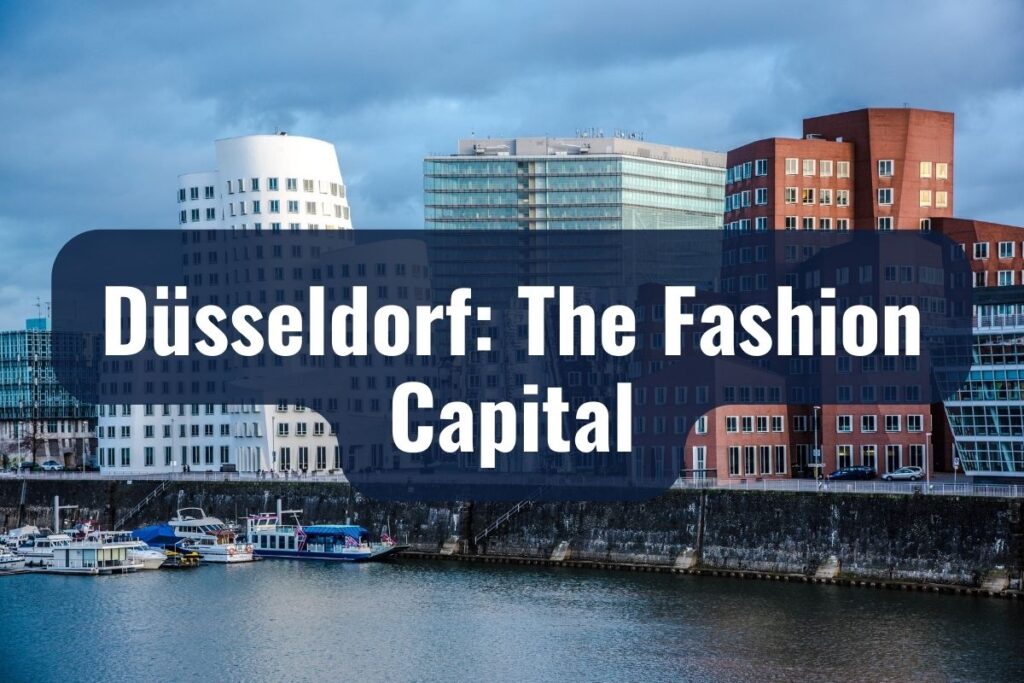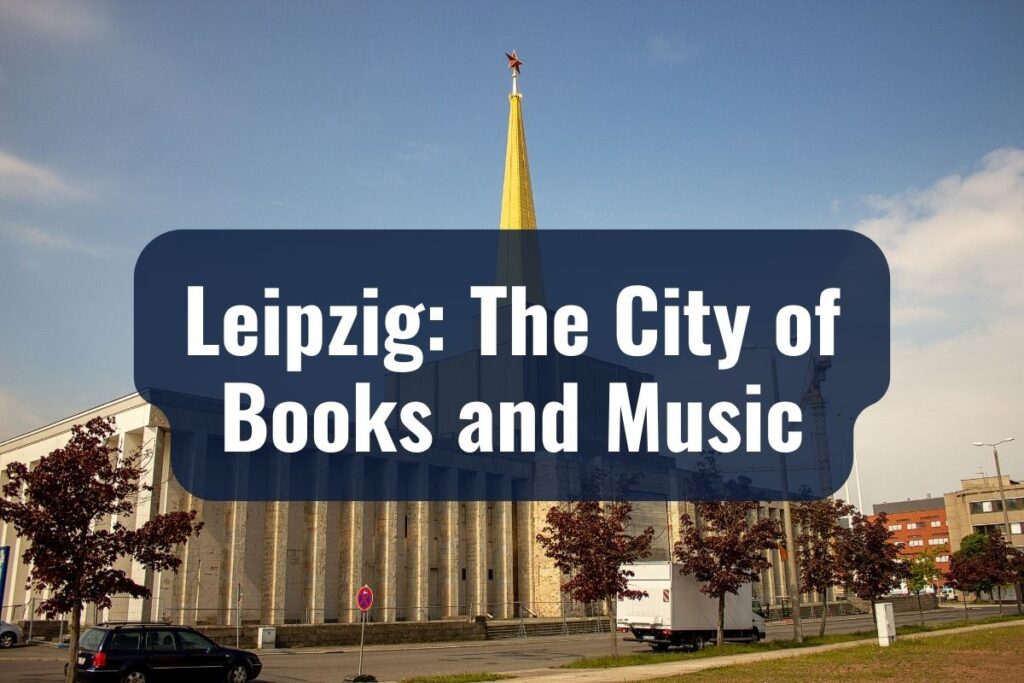Germany is a country of immense variety, and its cities serve as the perfect reflection of this diversity. Each metropolis is a universe unto itself, with its own culture, history, and opportunities. These aren’t just places of economic importance; they’re vibrant melting pots that offer a smorgasbord of experiences, from cutting-edge technology and finance to the arts and ancient traditions.
In this article, we’ll explore ten of Germany’s largest cities, diving into what makes each one special, how they’ve shaped modern Germany, and why you should consider packing your bags to experience them firsthand.
Key Takeaways
- Berlin serves as Germany’s cultural and political hub, brimming with modernity and history.
- Munich is the epitome of Bavarian culture and offers more than just Oktoberfest.
- Hamburg is a maritime city with a unique blend of trade, nightlife, and culture.
- Frankfurt stands as Germany’s financial heart with a cosmopolitan lifestyle.
- Cologne offers a mix of Roman history, media influence, and a vibrant arts scene.
- Düsseldorf is a fashion-forward city with a dynamic business environment.
Berlin: The Heart of Modern Germany
Nestled in the heart of Europe, Berlin stands as a beacon of resilience and reinvention. Once scarred by walls and watchtowers, today the city radiates a sense of unbreakable spirit and boundless creativity.
Berlin, with its tumultuous past, serves as a poignant reminder of the world’s modern history. At every corner, the city’s rich tapestry unfolds, from the grandeur of the Brandenburg Gate to the somber remains of the Berlin Wall. This isn’t just a place of monuments and museums; but a living testament to the triumphs and tragedies of the 20th century.
Neighbourhoods that Narrate Stories
Mitte: Often considered the epicenter of Berlin, Mitte is home to both the iconic TV Tower and the historic Reichstag building. Wander its streets, and you’re just as likely to stumble upon a trendy boutique as you are an ancient church.
Kreuzberg: A hotbed of arts and multiculturalism, Kreuzberg pulsates with life. Here, street art doesn’t just adorn the walls—it tells the story of Berlin’s edgy, alternative spirit.
Prenzlauer Berg: Elegant, chic, and teeming with lush green parks, this neighborhood is known for its restored pre-war architecture and an atmosphere that merges the bohemian with the bourgeois.
Landmarks that Leap from the Pages of History
While the Berlin Wall’s remnants continue to be a stark reminder of division, it’s also a canvas where artists have expressed hope, defiance, and dreams of a united future. The Brandenburg Gate, on the other hand, has been a symbol of unity and strength for over two centuries, having witnessed empires rise and fall.
The Expat Experience
Berlin’s cosmopolitan aura isn’t just confined to its landmarks and neighborhoods. The city boasts a thriving startup ecosystem, making it Europe’s Silicon Allee (or Alley).
International cuisines dot every street, from tantalizing Turkish kebabs to spicy Vietnamese pho. Night owls are in for a treat too, with the city’s nightlife being the stuff of legends. From techno temples to cozy cocktail bars, Berlin ensures that when the sun goes down, the city truly comes alive.
Munich: The Bavarian Jewel

When you step off the train at Munich Hauptbahnhof, you might feel as if you’ve walked into a fairy tale, albeit one that comes with a modern twist. Framed by the stunning Alps to the south and the sprawling Bavarian countryside to the north, Munich is where lederhosen and dirndls comfortably coexist with high-fashion boutiques and electric cars.
Oktoberfest: More Than Just Beer
Say “Munich,” and the first thing that likely springs to mind is Oktoberfest. And oh, what a festival it is! Envision a sea of people—locals and foreigners alike—gathered under massive tents, their tables laden with oversized beer mugs and hearty platters of Bratwurst and pretzels.
But beyond the beer gardens and folk music, Oktoberfest is a celebration that encapsulates the warm and welcoming spirit of Munich, making it an experience not to be missed.
Architectural Elegance and Iconic Landmarks
Marienplatz: Standing in Marienplatz, Munich’s central square, you’ll be captivated by the Glockenspiel and the impressive New Town Hall. This is the city’s beating heart, teeming with history and energy.
Neuschwanstein Castle: Just a short trip away from Munich, this castle could easily be a page out of a storybook. It’s the epitome of romantic architecture, seemingly plucked right out of a dream.
Munich’s architectural marvels are not confined to historic sites alone. The city is also home to contemporary wonders like the Allianz Arena, known for its illuminating facade that changes color.
The Business of Innovation
If Berlin is Germany’s startup capital, Munich is undoubtedly its tech hub. It’s home to global giants like BMW and Siemens, and the thriving tech scene offers a range of opportunities for skilled professionals. Indeed, Munich’s perfect blend of tradition and innovation makes it a magnet for those who seek a balanced lifestyle—rich in both culture and career prospects.
A Bavarian Sojourn for All
As you wander through Munich’s cobblestone streets, you’ll come across bustling markets like Viktualienmarkt, where locals shop for fresh produce and enjoy morning coffees. Pop into one of the city’s many Beer Gardens, and you’ll see entire families enjoying a sunny afternoon together. And if you’re an art aficionado, Munich’s numerous galleries and museums—like the Pinakothek museums—are nothing short of paradise.
In Munich, modernity doesn’t overshadow tradition; it complements it. Whether you’re drawn by its historic charm or its innovative spirit, Munich offers a multitude of experiences that are as rich and varied as a pint of its famous Bavarian beer.
Hamburg: Germany’s Gateway to the World
Imagine stepping into a maritime wonderland where ocean liners dock against the backdrop of historic warehouses. The air carries the salty scent of the sea, intertwined with wafts of exotic spices and freshly brewed coffee.
Welcome to Hamburg, a city that has long served as Germany’s gateway to the world. Its deep-water port is not just a bustling commercial hub; it’s the lifeblood of the city itself.
An Ode to the Reeperbahn
In a city that takes pride in its maritime heritage, there’s another district that dances to its own beat—The Reeperbahn. Known as Germany’s most infamous entertainment district, this is the place to embrace Hamburg’s wilder side.
It’s a never-ending carnival of neon lights, buzzing nightclubs, and intimate bars where stories are written and retold. Once a sailor’s paradise, the Reeperbahn has evolved but hasn’t lost its edgy charm, inviting everyone to partake in its nightly escapades.
The Speicherstadt: A Warehousing Masterpiece
One can’t mention Hamburg without highlighting the Speicherstadt, the largest warehouse district in the world, built on timber-pile foundations. With its Gothic red-brick architecture and winding canals, it’s a photographer’s delight and a history enthusiast’s dream.
Now a UNESCO World Heritage site, the Speicherstadt is where you’ll find a variety of museums, from the Miniatur Wunderland, a miniature world, to the Hamburg Dungeon that revisits the city’s darker chapters.
Maritime and Beyond: Opportunities Galore
Hamburg’s thriving port is a global commerce hub, making the city a crucial player in logistics, shipping, and trade. This brings numerous opportunities for professionals in these sectors, making it an expat-friendly city with a global outlook. But Hamburg’s business scene isn’t all nautical; it’s also a growing center for the media, aerospace, and renewable energy industries.
A Breath of Fresh Air
If you ever tire of the hustle and bustle, Hamburg offers a myriad of green spaces for respite. One such sanctuary is the Planten un Blomen park, where beautifully manicured gardens offer a peaceful escape from the urban jungle. And let’s not forget the Alster Lake, whose shimmering waters invite both tourists and locals to sail, jog, or simply unwind.
Frankfurt: The Financial Powerhouse

You might hear it before you see it—the constant hum of commerce, the subtle chime of a deal being made. Frankfurt is a city that never truly sleeps, for even when the markets close, the vibrant energy simply shifts from trading floors to cosmopolitan streets.
With its high-rise towers piercing the sky, Frankfurt is often dubbed “Mainhattan,” a playful blend of the River Main that flows through it and New York’s famous Manhattan district. This is the city where Germany’s economic pulse quickens, a magnet for everyone from financiers to futurists.
Banking with a Side of Apple Wine
In a city famed for its financial institutions—home to the European Central Bank and the Frankfurt Stock Exchange—it’s easy to forget that Frankfurt has a cultural underbelly as robust as its economic muscle. Take a stroll through the Alt-Sachsenhausen district, where taverns serve traditional apple wine, a regional specialty that provides a sweet counterpoint to the city’s corporate image.
Essential Neighborhoods and Landmarks
Bankenviertel: This is Frankfurt’s banking district, where modern skyscrapers house some of the world’s most powerful financial institutions. The skyline here competes with the world’s great cities.
Römer: This square and its half-timbered houses offer a glimpse of old Frankfurt. This juxtaposition of the historic and the contemporary is a recurring theme in the city.
Städel Museum: Art lovers, rejoice! This museum boasts an extensive collection ranging from Old Masters to modern contemporary works, allowing a deep dive into European art history.
Career Opportunities Beyond Finance
While Frankfurt is undeniably a financial nucleus, its employment opportunities aren’t restricted to banking and finance. The city also excels in sectors like IT, engineering, and pharmaceuticals.
Lufthansa’s presence boosts the aviation sector, and Messe Frankfurt is one of the world’s largest trade fair venues, attracting professionals across diverse industries.
The Green Oasis: Palmengarten
In a city constantly calculating numbers and trends, places like Palmengarten offer a different kind of richness. This botanical garden is a green oasis amidst Frankfurt’s concrete and steel. It serves as a testament to the city’s commitment to balance—between work and leisure, economy and ecology.
Cologne: A City of Arts and Media
As your train rolls into Cologne, your eyes are immediately drawn to the dominating silhouette of the Cologne Cathedral, or Kölner Dom as it’s locally known. This majestic Gothic structure is a grand opening act for a city that combines ancient splendor with a dynamic arts and media landscape.
While some cities shout, Cologne sings—with everything from its historic architecture to its modern media stations broadcasting a melodious hymn of culture, history, and innovation.
A Cathedral and Much More
While the Kölner Dom is unquestionably the superstar attraction, the city offers a repertoire of other historic sites and cultural venues. Take a stroll through the Old Town with its narrow, winding streets and you’ll find not only vintage charm but also contemporary creativity. Quaint boutiques, hip cafes, and art galleries lie nestled among historical landmarks.
Spotlight on Neighborhoods and Landmarks
Ehrenfeld: Known for its alternative culture, Ehrenfeld is teeming with street art, quirky shops, and a plethora of bars and cafes. This is Cologne’s bohemian district, where creativity is the currency.
Museum Ludwig: Situated near the cathedral, this museum is a treasure trove of modern art. From Picasso to Pop Art, it offers a kaleidoscopic journey through 20th and 21st-century art.
Hohenzollern Bridge: Also known as the ‘Love Locks Bridge,’ this is where couples come to secure padlocks as a symbol of their love, throwing the key into the Rhine as a testament to eternal affection.
A Media Hub with a Melodic Heart
Cologne isn’t just a feast for the eyes; it’s a playground for the ears as well. As one of Germany’s media capitals, the city is home to numerous TV and radio stations, publishing houses, and advertising agencies. If you’re in the media field, this city is not just a potential workplace but also a source of endless inspiration.
Carnival: Cologne’s Soul Unleashed
Every year, the city bursts into vibrant life during its famous Carnival, a festival of costumes, parades, and unadulterated joy. Locals and tourists alike don eccentric outfits and join the citywide party. It’s like stepping into a parallel universe, one where the daily grind takes a backseat, and jubilant freedom takes the wheel.
Cologne invites you to experience its multi-faceted personality—from its deeply-rooted history to its cutting-edge media scene, from its artistic avenues to its celebration of life. So as you sip a Kölsch, the local beer, on a Rhine riverboat, watching the city lights dance on the water’s surface, you realize that Cologne is not just a destination; it’s a narrative that invites you to be both an observer and a participant.
Düsseldorf: The Fashion Capital

As you disembark in Düsseldorf, you may notice something in the air—no, it’s not just the scent of the Rhine River. It’s an ineffable sense of style that seems to flow through the city like an invisible runway.
Welcome to Düsseldorf, Germany’s fashion capital, where even the cityscape seems to dress up, from the avant-garde architecture of the Media Harbor to the chic boutiques of Königsallee.
Königsallee: The Fifth Avenue of Germany
A walk down the tree-lined Königsallee (often abbreviated to “Kö”) is akin to stepping into a real-life fashion magazine. Luxury brand flagships, high-end jewelers, and plush cafes make it a mecca for fashionistas and those who appreciate the finer things in life. The Kö is not just a shopping destination; it’s a lifestyle statement.
Must-See Spots and Hidden Gems
Media Harbor: Düsseldorf’s modern architectural marvels like the twisted Gehry buildings are found here, embodying the city’s forward-thinking attitude.
Rhine Tower: Take an elevator ride up to get panoramic views of Düsseldorf, a vantage point that’s as Instagrammable as it gets.
Andreas Quartier: Once a court building, this space has been transformed into a hub of restaurants, cafes, and small shops, encapsulating Düsseldorf’s knack for balancing the old and new.
The Artistic Flair: Beyond Fashion
Art thrives in this stylish metropolis. The Kunstsammlung Nordrhein-Westfalen, a key art museum, hosts an impressive collection of modern art, while the Museum Kunstpalast offers a wider range, from classical to contemporary.
The city is also celebrated for its vibrant theatre and music scenes, rounding off its fashionable exterior with a substantial core of cultural richness.
Business and Innovation in the Limelight
But don’t be fooled by the city’s svelte exterior; Düsseldorf is not just about aesthetics. It’s a significant business hub, especially for telecommunications and a variety of other industries. This makes the city not only a dream locale for the artistically inclined but also a practical home for entrepreneurs and professionals.
Japan Day: An Unexpected Delight
Once a year, Düsseldorf throws a curveball—Japan Day. Thanks to its large Japanese community, the city hosts an annual event featuring everything from sushi-making workshops to traditional tea ceremonies, capped off by a stunning fireworks display over the Rhine.
As you sit in a riverside café, sipping on an Altbier—Düsseldorf’s native dark beer—you realize that the city is more than just its fashionable facade. It’s a multi-layered ensemble of art, business, and culture. Just like the perfect outfit, Düsseldorf combines different elements to create something effortlessly chic, yet deeply substantive.
Stuttgart: The Cradle of the Automobile
As you roll into Stuttgart, the vistas are surprisingly bucolic for a city synonymous with horsepower and engineering. Nestled amid rolling hills and verdant vineyards, Stuttgart is a paradox of sorts—an industrial titan with a pastoral soul. It’s a city that celebrates the roar of an engine with the same gusto as the pouring of a fine Swabian wine.
A Mecca for Motorheads
Stuttgart is to car lovers what Hollywood is to film buffs. Home to iconic brands like Mercedes-Benz and Porsche, the city is often referred to as the cradle of the automobile.
The Mercedes-Benz Museum and Porsche Museum are pilgrimage sites for car enthusiasts, offering a journey through the evolution of automobiles—from the earliest models to futuristic designs.
Must-Experience Attractions
Wilhelma Zoo and Botanical Garden: It’s one of the most visited zoological gardens in Germany, offering an exotic mix of animals and plants, and a tranquil setting for a family outing.
Schlossplatz: The central square in Stuttgart is surrounded by buildings of historical significance and offers ample space for public gatherings, events, or simply lounging in the sun.
Königstraße: This is Stuttgart’s primary shopping street, dotted with boutiques, department stores, and eateries, drawing parallels to Düsseldorf’s Königsallee but with a distinctly Swabian flavor.
The Innovative Spirit: Beyond Cars
While automobiles remain the cornerstone, Stuttgart is also a hub for high-tech industries, ranging from software development to sustainable energy. Research and academia have a strong foothold here, symbolized by institutions like the University of Stuttgart, which focuses heavily on engineering and technology.
A Culinary Ride Through Swabian Cuisine
In between visits to car museums and tech parks, make sure to taste the local Swabian cuisine. From Maultaschen, a kind of German dumpling, to Spätzle, a delicious egg noodle dish, Stuttgart serves up hearty meals that can fuel both engineers and explorers alike.
Wine and Cars: An Unlikely Pairing
Stuttgart defies easy categorization. One minute you’re marveling at the sleek lines of a luxury car, and the next, you’re in the serene setting of a vineyard. Yes, you heard that right.
Stuttgart is the only major city in Germany with a significant wine-growing industry. The city’s annual wine festival is a nod to this unique blend of industrial might and agricultural grace.
Leipzig: The City of Books and Music

As your journey unfolds through Germany’s vibrant urban landscapes, there comes a city that seems composed of a different set of notes. Enter Leipzig, a place where books and music harmonize to create an unparalleled cultural score.
Famous as the home of Johann Sebastian Bach and the birthplace of Richard Wagner, Leipzig is a city where every street could be a stanza and each building a verse in a long poetic narrative.
The Hallowed Halls of Thomaskirche
Imagine walking into Thomaskirche, the church where Bach served as a cantor and where his remains now lie. The notes of his compositions still seem to reverberate through the air. This isn’t just a historical landmark; it’s a living testament to Leipzig’s profound musical heritage.
Leipzig’s Cultural Cornerstones
Leipzig Book Fair: As one of the oldest and most prestigious book fairs in the world, this event transforms the city into a haven for bibliophiles and industry professionals alike.
Gewandhaus Orchestra: This is one of the world’s leading symphony orchestras, holding concerts that range from classical to modern repertoires. A night here is more than entertainment; it’s an aural feast.
Leipzig Zoo: One of the oldest zoos in the world, it offers a ‘Zoological Experience of the Future,’ blending wildlife conservation with interactive experiences.
Beyond Bach: Leipzig’s Modern Music Scene
While the city pays homage to its classical roots, it also thrives on its modern music scene. Whether it’s the underground techno clubs or vibrant live music venues, Leipzig pulsates to contemporary rhythms as effortlessly as it sways to classical harmonies.
Books, Books, and More Books
If you find solace between the pages of a book, Leipzig won’t disappoint you. The city is often termed the ‘City of Books’ owing to its long-standing publishing history. The Deutsche Nationalbibliothek, the German National Library, is headquartered here, containing a rich tapestry of German literature and history.
Coffee and Conversations
Did you know Leipzig might have hosted Germany’s first coffee house? This long-standing coffee culture persists today, and there’s no better place to experience it than in the many cafes dotted around the city. It’s not uncommon to see people engrossed in books or intense conversations, coffee in hand, adding another layer to Leipzig’s intellectual charm.
Nuremberg: A Blend of History and Modernity
The first thing you might notice upon arriving in Nuremberg is its castle, standing tall and regal, overlooking a city where history is not just preserved but lived. But as you delve deeper, you’ll find that Nuremberg is far more than just a historical relic—it’s a dynamic city that melds its rich past with a constantly evolving present.
Nuremberg Castle: An Aerial Perspective
Perched atop a sandstone hill, the Nuremberg Castle is more than just a tourist attraction—it’s the city’s watchful guardian, offering panoramic views that stretch across the entire city. It serves as a picturesque entry point to the Old Town, a labyrinthine layout of cobblestone streets and half-timbered houses.
A Closer Look at Key Highlights
Kaiserburg Museum: Situated within the castle complex, this museum is an ideal stop for those who want to dive deep into the city’s medieval history.
Christkindlesmarkt: This Christmas market is one of the oldest and most famous in the world. Even if you visit outside the holiday season, its legacy is felt year-round in the form of local crafts and traditional foods.
Documentation Center Nazi Party Rally Grounds: This center serves as a sobering but necessary look into the darker chapters of German history, housed in the unfinished remains of the Congress Hall from the Nazi era.
The Renaissance of Innovation
Beyond its historical landmarks, Nuremberg is a powerhouse of innovation and industry, particularly in the fields of automation, energy, and IT. Companies both large and small set up shop here, contributing to a cityscape that is continually updating itself, writing new chapters in its already voluminous book of life.
Culinary Traditions: From Bratwurst to Gingerbread
In between your explorations, don’t miss the opportunity to indulge in Nuremberg’s culinary specialties. The city is renowned for its delicious bratwurst and gingerbread, which are as much a part of its cultural fabric as the castle and the museums.
Nuremberg Trials Memorial: A Lesson for Humanity
In a city where history is so palpable, the Nuremberg Trials Memorial stands as a poignant reminder of the need for justice and human rights. It’s a place where visitors can confront the complexities of history while pondering the challenges of today’s world.
Dresden: The Florence of the Elbe
As you approach Dresden, the silhouette of the cityscape starts to resemble an elegant painting—complete with Baroque splendor and the shimmering Elbe River as its canvas. Often dubbed the “Florence of the Elbe,” Dresden combines its phoenix-like narrative of post-war reconstruction with the enduring allure of art and culture.
The Semperoper: An Ode to Musical Excellence
If you’re a fan of opera or classical music, the Semperoper is nothing less than a temple. Reconstructed after the devastations of World War II, it stands today as a symbol of Dresden’s indomitable spirit and dedication to the arts. A performance here is not just a musical feast; it’s an experience steeped in history.
Dresden’s Captivating Sites
Zwinger Palace: This stunning Baroque palace hosts a series of museums and is a marvel of architecture with its ornate pavilions and lush gardens.
Frauenkirche: This Lutheran church was painstakingly rebuilt after the war, turning its ruins into a symbol of peace and reconciliation.
Albertinum: Home to the Galerie Neue Meister and the Green Vault, this museum complex offers a compelling look at both classical and modern art.
The Artistic Strokes: From Old Masters to New Talent
The city serves as a canvas for both historic art and contemporary flair. The Old Masters Picture Gallery houses an impressive collection of European art, while the Neustadt district vibrates with graffiti art, edgy galleries, and youthful energy.
The Liquid Gold: Saxon Wine
Though Dresden is not typically renowned for its wine, the Saxony wine region offers vineyards situated on the banks of the Elbe, giving you a completely different perspective of the city’s elegance. A sip of the local Müller-Thurgau or Riesling provides a taste of Dresden that’s both refined and earthy.
Beyond the Aesthetics: Dresden’s Intellectual Core
Art and beauty aren’t the only things Dresden excels in. It’s also a city of intellect and innovation. Home to one of the oldest technical universities in Germany, the TU Dresden, the city is a breeding ground for research and development, particularly in microelectronics and biotechnology.
As you stroll by the Elbe, beneath the intricate spires and across cobblestone streets, you realize that Dresden’s beauty is not just skin deep. It is etched in the city’s DNA—woven into its art galleries, reflected in its historic landmarks, and even distilled into its local wines.

Become a Local, Even if Temporarily: Mastering the Urban Jungle
Embarking on a journey through Germany’s sprawling metropolises can be both exhilarating and overwhelming. Fear not! This section is your compass, your pocket guide to navigating the urban landscapes effortlessly.
Whether you’re an adventurer with an insatiable wanderlust or a cautious traveler treading carefully, these essential tips will make your city-hopping across Germany a breeze.
Public Transport: Your Trusty Steed
| City | Unique Feature | Tip for Newcomers |
| Berlin | 24/7 U-Bahn on weekends | Have a ticket ready; spot checks are common |
| Munich | Night break in public transport | Plan your outings around the operating hours |
| Hamburg | HafenCity RiverBus | Don’t miss this bus that transforms into a boat |
| Frankfurt | Extensive S-Bahn network | Best for reaching the city’s outskirts quickly |
German public transport is highly efficient, but each city has its nuances.
Berlin: A city that never sleeps deserves a public transport system that doesn’t either. The U-Bahn and several bus lines operate 24/7 on weekends.
Munich: Unlike Berlin, Munich’s public transport takes a nightly break. Plan your Oktoberfest outings accordingly.
Hamburg: The HafenCity RiverBus is not to be missed—a bus that turns into a boat, offering an adventurous take on public transit.
Communication: The Power of a Polite ‘Hallo’
While many Germans speak excellent English, a simple “Hallo” or “Danke” (thank you) in German can go a long way in breaking the ice.
Local SIM Cards and WiFi Spots
Staying connected is key to navigating any big city. Most cities offer an array of free WiFi spots, but having a local SIM card for data on the go can be a lifesaver.
Cash or Card? Understanding the Payment Culture
In the land of engineering marvels, cash is still king. Many small establishments in Germany do not accept cards, so it’s advisable to keep some cash on hand.
Savor the Local Flavor: From Bratwurst to Kebabs
Each city has its own culinary specialities, and trying them is part of the urban adventure. Be it Berlin’s Currywurst or Munich’s Weisswurst, don’t miss the chance to indulge in local flavors.
Cultural Nuances: Understand Before You Step In
Queue Discipline: Germans take their queues seriously. Skipping lines is a faux pas that will draw more than just stern looks.
Tipping: While tipping isn’t obligatory, it’s generally considered good form to leave small change or round up the bill.
Sundays: Many shops close on Sundays. Plan your shopping and grocery trips accordingly.
Keeping Safety in Mind
Germany’s major cities are generally safe, but like any big city, it’s important to remain vigilant, especially in crowded or less well-lit areas.
As you traverse through the intricate web of German cities, each with its unique pulse and rhythm, remember that the essence of travel is to absorb and adapt. With these essential tips in your back pocket, you’ll navigate Germany’s urban landscapes as smoothly as a local, savoring the journey as much as the destination.


